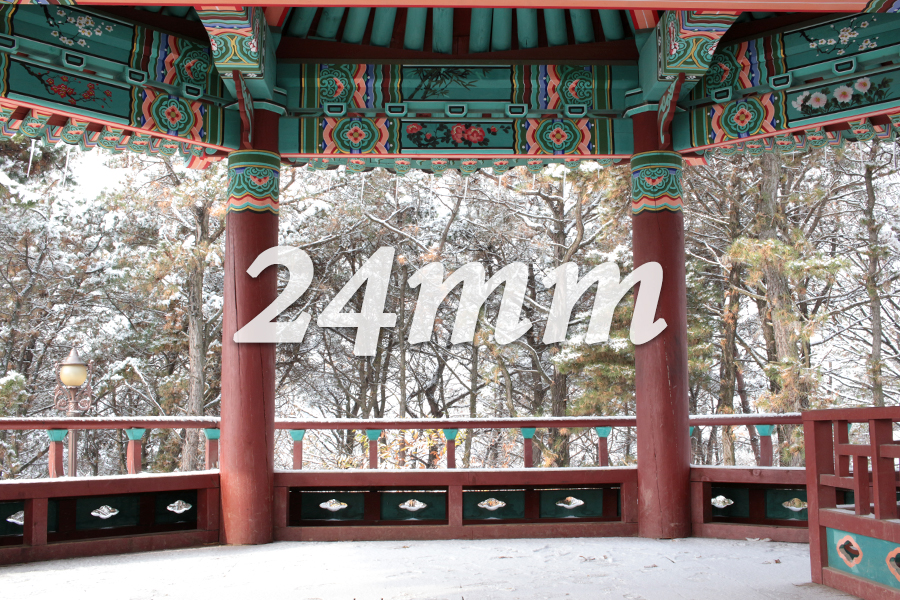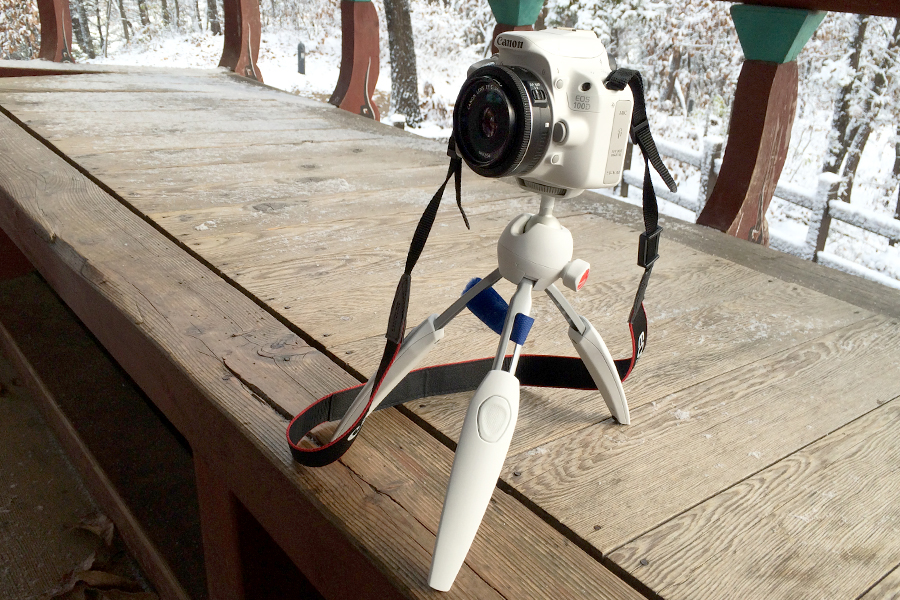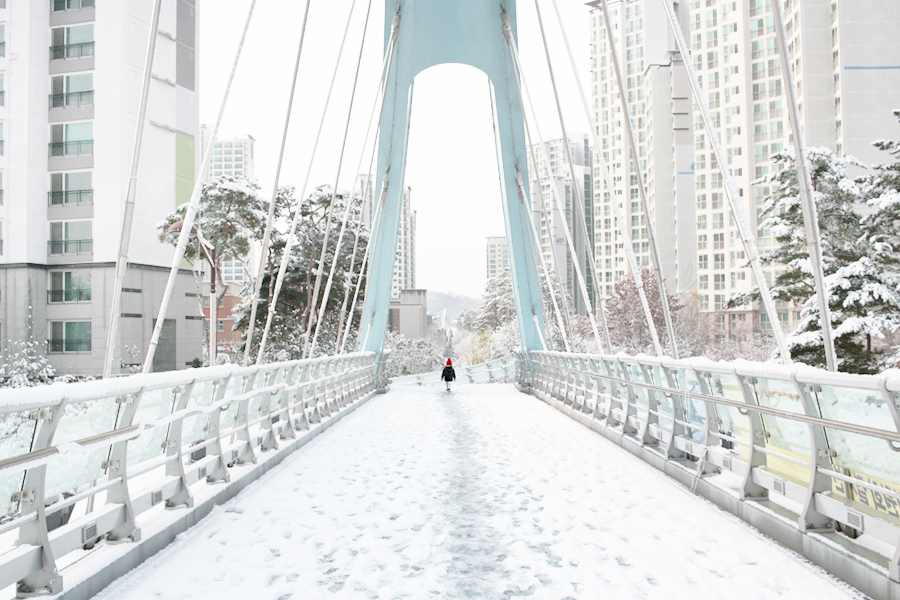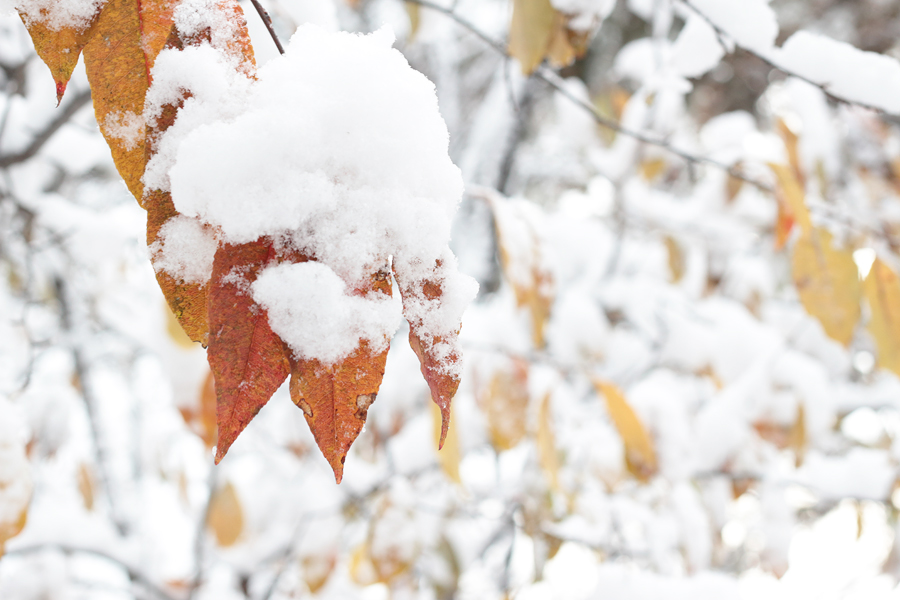
I’ve been rocking the Canon pancake EFS 24mm lens for just about a year now and I’m still loving it more than the EF 40mm lens on my cropped sensor DSLR. It’s been a few months since a reader requested a scenery comparison between the two lenses, but I’d been struggling to the perfect example that would clearly demonstrate the difference in the lenses. Now, I realize this is not exactly a scenery shot per say, but the colors and structure of this Korean gazebo makes it super easy to see exactly how different the EFS 24mm is from the EF 40mm.

As you can see, the 24mm lens is a much wider angle than the 40mm lens. You might ask, why don’t you just back up a little further using the 40mm lens? Well, this photo was taken from the 2nd story of a gazebo and there was no more room to back up.

In order to make an even comparison, I used a tripod to ensure the photos were taken from the exact same place. It’s a little hard to tell from this photo, but this ledge was sloped downwards so I didn’t feel comfortable setting up my camera further to the edge. So the 24mm prime lens can come in very handy in tight spaces as it can capture a wider frame. It’s possible to crop a photo taken with the 24mm in order to get something similar to what you can take with the 40mm, but the reverse is very difficult if you’re unable to back up for whatever reason. Of course, the zoomed in quality of the 40mm could potentially come in handy for detail shots that are out of reach, but at that point you may as well invest in a zoom lens. I find it’s the versatility of the 24mm lens being able to take semi-macro shots as well as wide-angle shots that keeps my 40mm lens home in a drawer.

Now this is a little bonus comparison so you can get an idea of how far away the other side of the gazebo was. This was taken with the Canon EFS 10-18mm lens set at 18mm. While I tend to favor the 24mm for street and product photography, I love the 10-18mm lens for architecture. This comes in especially handy if the building is very long. My only reservations with this lens is that it does tend to get some distortion, especially towards the 10mm end. I would stay I’m still pretty happy with the lens, especially considering the relatively lower price for an ultra wide-angle lens. This is also one of the reasons I decided to choose Canon over Nikon.

So this is the 10mm end of the EFS 10-18mm. As you can see there is a bit of distortion going on, but it gives you an idea of how far away the camera was from the other side of the gazebo. If you take a look at the square pattern of the ceiling, you can further estimate the distance between the camera and the gazebo, as the gazebo was pretty much symmetrical from all sides. I hope this comparison helps you get a better feel for the difference between the 24mm lens vs the 40mm lens. I know it can be difficult to clearly see the difference in store, especially if you’re wanting to use it for scenery or street photography. Another tip is that some Canon stores won’t have memory cards inside the cameras on display, so it can be difficult to compare shots using different lenses as you can’t save the photos you take. So bring a memory card as well as your camera to the Canon store if you’d like to take some photos home for comparison.



These are some of my shots using the 24mm lens. While the gazebo photos were not retouched and only required a little straightening, the snow day photos were retouched due to my somewhat lacking photography skills. However there was minimal cropping, so consider them as reference for how wide the angle is. The coloring is effected by lighting conditions as well as editing preferences, so please don’t nix the lens over the photo style!
Related Posts
40mm vs 24mm Macro Comparison
Photography Essentials for Bloggers
Travel Photography for Beginners
Your turn ♥ Which lens do you always find yourself reaching for? Have you ever tried a prime lens before?



